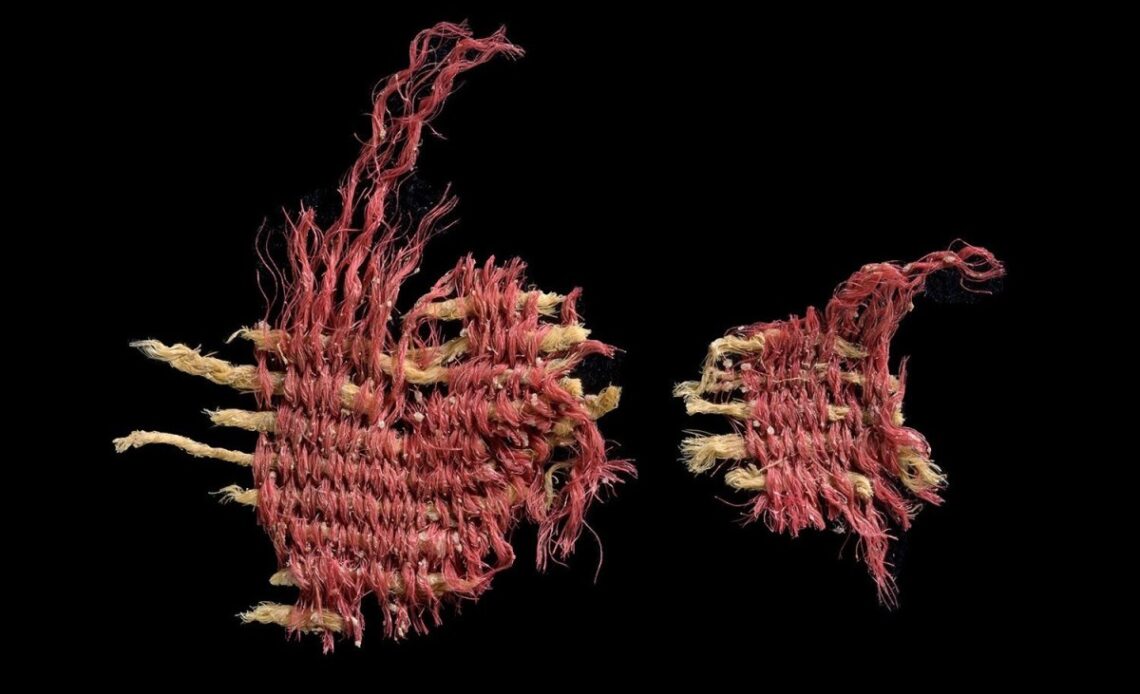A precious ancient scarlet-red dye has been identified on 3,800-year-old textile fragments that were found in a desert cave.
The rare textiles, which consist of uncolored linen and dyed bright red wool pieces, were originally discovered in 2016 in the Cave of Skulls, Israel, west of the Dead Sea in the Judaean Desert.
A team of researchers subsequently analyzed the tiny textile fragments and have now determined that they contain a red dye made from scale insects of the species Kermes vermilio, which was highly valued in the ancient world, according to a study published in the Journal of Archaeological Science: Reports. The authors conclude that these fragments represent the earliest known use of a red dye produced using these kinds of insects.
“Despite the fact that these textile fragments measure no more than 1.5 centimeters [0.6 inches], their significance is immense, as they bear witness to the utilization of scale insects for dyeing textiles during the Middle Bronze Age, the earliest of its kind known to date,” the authors wrote in the study.
Dafna Gazit/Israel Antiquities Authority
The color red has been regarded as symbolically significant throughout history by various cultures around the world. Scarlet was considered one of the ancient world’s most precious and expensive dyes, alongside royal blue and purple. Scarlet was even mentioned several times in the Bible, in addition to the two other aforementioned colors.
Red dyes were produced from various sources in antiquity, including plants and animals. Some of the most luxurious red dyes were derived from various species of scale insects, including Kermes vermilio.
The two tiny textile fragments that are the subject of the latest study belong to the same artifact. The pieces were among numerous organic objects—such as textiles, yarns, ropes, basketry, leather and wood artifacts—that were found in 2016 during an excavation conducted on behalf of the Israel Antiquities Authority and the Hebrew University of Jerusalem.
All of these organic objects were “remarkably” preserved for millennia due to the dry and relatively…
Click Here to Read the Full Original Article at Newsweek…

